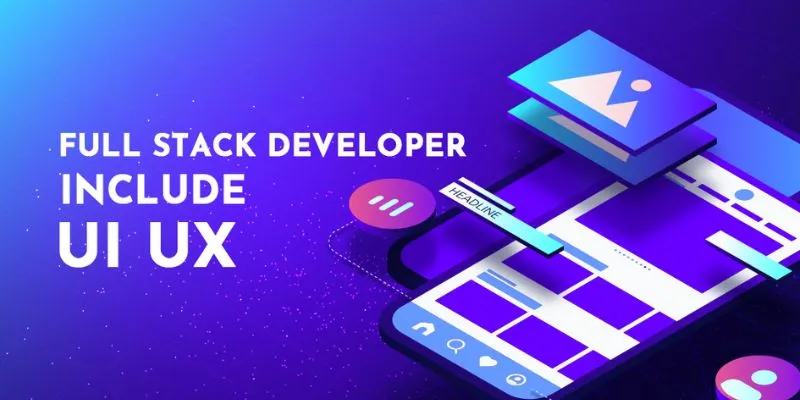
In the world of web development, creating an application that is visually appealing and easy to use is essential. As a Fullstack developer, you’re responsible for both the backend (server-side) and frontend (client-side) of an application. But in addition to writing code, understanding and applying UI/UX (User Interface/User Experience) principles is crucial. It ensures that users find your application enjoyable, easy to navigate, and efficient. Whether you are learning through a Full Stack Developer Courses in Bangalore or already in the field, mastering UI/UX practices will help you build better applications. This Blog is about The Best UI/UX Practices for Fullstack Developers provides a smooth, enjoyable experience for users.
1. Focus on User-Centered Design
The first step to good UI/UX design is understanding your users. This means knowing what they need, what problems they face, and how your application can solve them. Before you even start coding, spend time researching the audience your application is meant for.
How to apply this:
– Create personas that represent different types of users.
– Think about the user journey, mapping out how someone interacts with your app from start to finish.
– Make sure everything you design and build focuses on improving the user’s experience.
2. Keep It Simple and Clear
Simplicity is key to a good user interface. Users should never feel overwhelmed when navigating your application. They should be able to find what they are looking for easily, without too many options or complicated menus.
Tips:
– Keep your design clean and clutter-free.
– Use clear headings and make sure important buttons and actions are easy to find.
– Stick to a limited number of colors and fonts to keep the design consistent.
Whether you are just beginning or polishing your skills in a Full Stack Developer Training in Marathahalli, keeping things simple will make your work stand out.
3. Maintain Consistency Throughout
Consistency in design helps users feel more comfortable using your application. When buttons, menus, and interactions behave the same way throughout, it reduces confusion and makes your application easier to use.
How to achieve this:
– Use the same colors, fonts, and styles across all pages.
– Make sure the buttons and navigation menus look and work the same everywhere.
– Test the application regularly to ensure that new updates don’t break the existing design.
4. Ensure Responsiveness and Accessibility
In today’s world, people use a variety of devices—phones, tablets, laptops—to access applications. Ensuring your application looks and works well on all devices is critical. Moreover, accessibility is equally important, allowing users with disabilities to navigate your application easily.
Steps to take:
– Design your application to work on different screen sizes by making it responsive.
– Use large, clear buttons and readable fonts that work well on all devices.
– Implement features like keyboard navigation and screen reader compatibility to make your app accessible.
This is especially important if you are working on a project as part of your UI UX Design Course in Marathahalli, as learning how to create responsive and accessible apps will be a huge asset.
5. Provide Clear Feedback
When users perform an action, like submitting a form or clicking a button, they should get immediate feedback. It reassures them that their action was successful or alerts them if something went wrong.
Ways to implement feedback:
– Show loading animations or progress bars when something is being processed.
– Display error or success messages after submitting forms.
– Highlight the button or link when a user clicks it.
6. Optimize for Performance
No matter how well your application is designed, if it’s slow, users will leave. Optimizing your application for performance ensures that it runs smoothly and quickly.
Performance tips:
– Reduce the size of images and other media files.
– Load only the necessary parts of the application at a time (lazy loading).
– Use techniques like caching to reduce loading times.
For anyone taking a Best UI UX Design Course in Bangalore, performance optimization is an essential skill to develop.
7. Use Data to Continuously Improve
It’s important to keep improving the application based on how users interact with it. By analyzing user data and feedback, you can see where users might be struggling and make changes to improve the experience.
What you can do:
– Use tools like Google Analytics to track user behavior.
– Gather feedback from real users about what they like or don’t like.
– Continuously test new features and designs to see what works best.
8. Reduce Cognitive Load
Cognitive load refers to the amount of mental effort required to use your application. By minimizing this, you help users complete tasks faster and with less effort. Organize information in a way that makes sense and guide users smoothly through the application.
How to reduce cognitive load:
– Use clear, descriptive headings and labels for buttons.
– Break tasks into smaller, more manageable steps.
– Highlight important information to draw the user’s attention.
9. Test, Iterate, and Improve
Usability testing is a crucial step in improving UI/UX. Conduct regular tests with users to identify areas for improvement. Testing allows you to find issues before they affect a large number of users and continuously refine the user experience.
How to conduct usability testing:
– Ask users to perform tasks and observe where they struggle.
– Collect feedback through surveys or direct user interviews.
– Regularly update your application based on testing results.
Mastering UI/UX principles is crucial for any Fullstack developer. A well-designed application not only looks good but also provides a smooth, enjoyable experience for users. Whether you’re just starting or already have some experience, focusing on these practices will help you create better, more user-friendly applications. Learning these practices through a Training Institute in Bangalore will give you a solid foundation in both the technical and design aspects of web development. Keep in mind that building a great user experience is a continuous process, one that evolves based on user feedback and new trends. With these best practices in mind, you’ll be well on your way to creating successful, engaging applications.
Also Check: Full Stack Developer Interview Questions and Answers
